It’s been a challenging time for the direct mail marketing industry. Recession, rises in paper and postage costs, and the pandemic have all contributed to the turbulence.
At the same time, though, trends have become apparent in how mail is changing that show promising ways forward in the months and years ahead.
Since 1984, Who’s Mailing What! has been the record of direct mail in America. In addition to samples of mail in dozens of subcategories, we also provide marketers and printers a deep dive of insights about those pieces. We’ve looked at our statistics from recent years and have developed three key insights that show how the mail we’ve tracked has changed — and how you can take advantage of those trends.
1.Digital Response Options Are Growing
Our data shows that from 2000 to 2021, mail with digital elements grew from less than one percent of our collection to over 10% in recent years. In just the last five years, the usage of digital response devices in direct mail campaigns has doubled. In most cases, this trend has come at the expense of reply envelopes and forms.
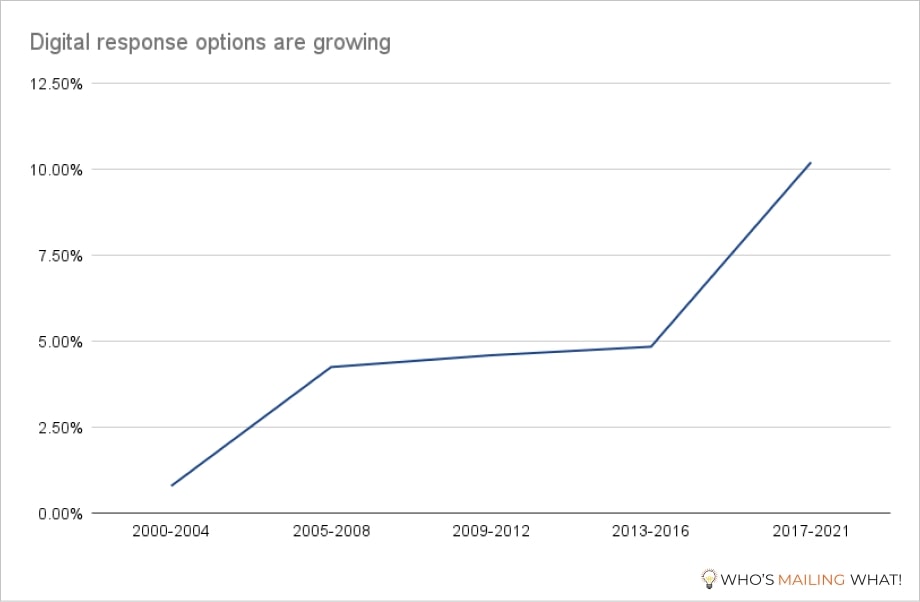
In our 2021 data, we focused on mail pieces that contain digital response elements. The distribution of channels shows that QR code usage has soared (now at 40% of all mail received), with web addresses close behind.

We also looked at what industries have a digital prompt in their campaigns in 2021. Here is the breakdown. Retail mail made the best use of digital channels at 40%, with nonprofits at a more distant 18%.
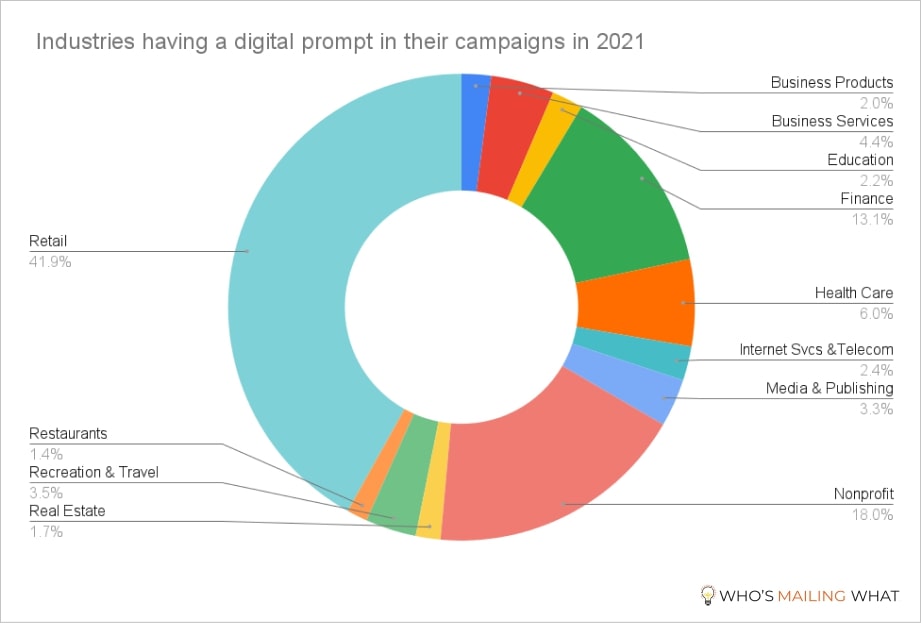
We also looked at the top three industries using apps, websites, voice activated call to action (VACTA), QR codes, and social media in their direct mail campaigns.
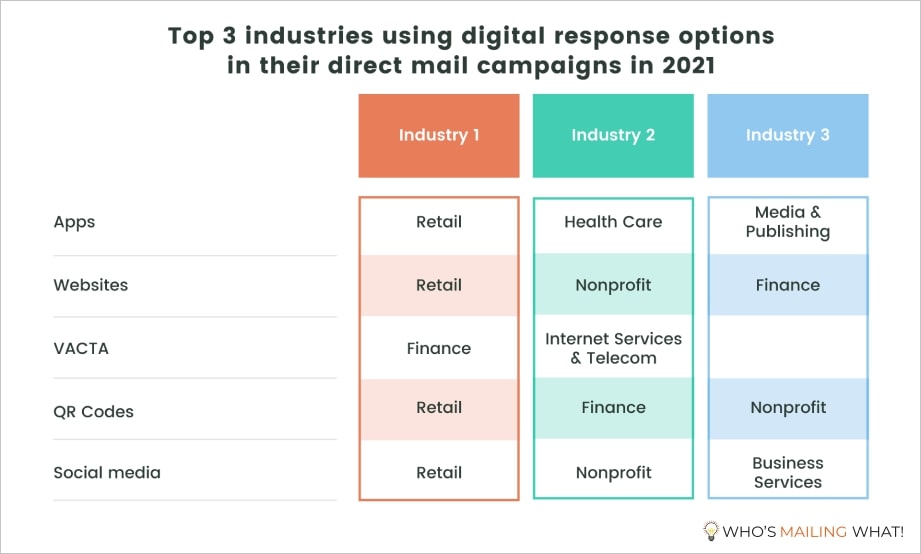
Here are some phrases we looked at in our research.
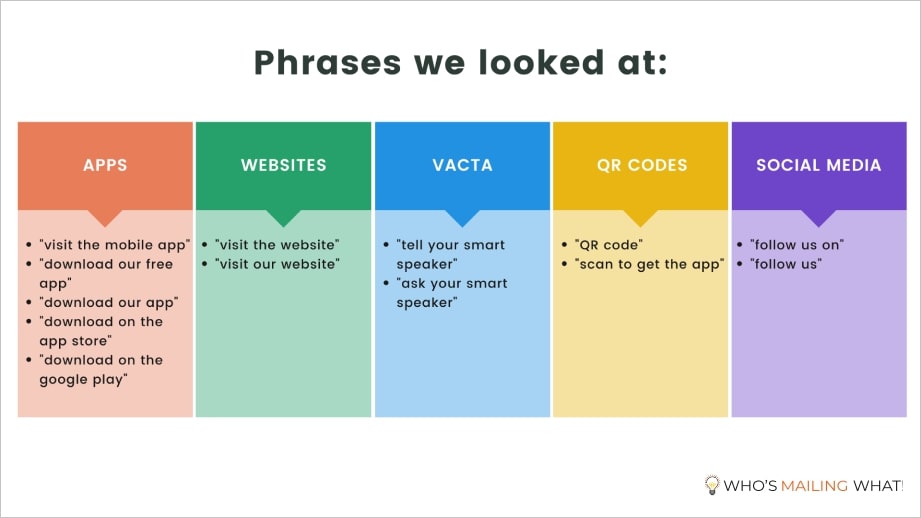
Marketers know that it is essential to give customers and prospects as many ways as possible to interact with you and to respond to your offer with a purchase or donation.
Try attention-getting phrases like:
•Scan the QR code
•Download our app
•Tell your smart speaker
•Follow us
•Visit our website
2.Postcard Use Continues to Rise
Over the last 13 years, according to our data, mailing of postcards has risen sharply, while envelopes and self-mailers have declined. In fact, postcards account for nearly half of all mail cataloged today.
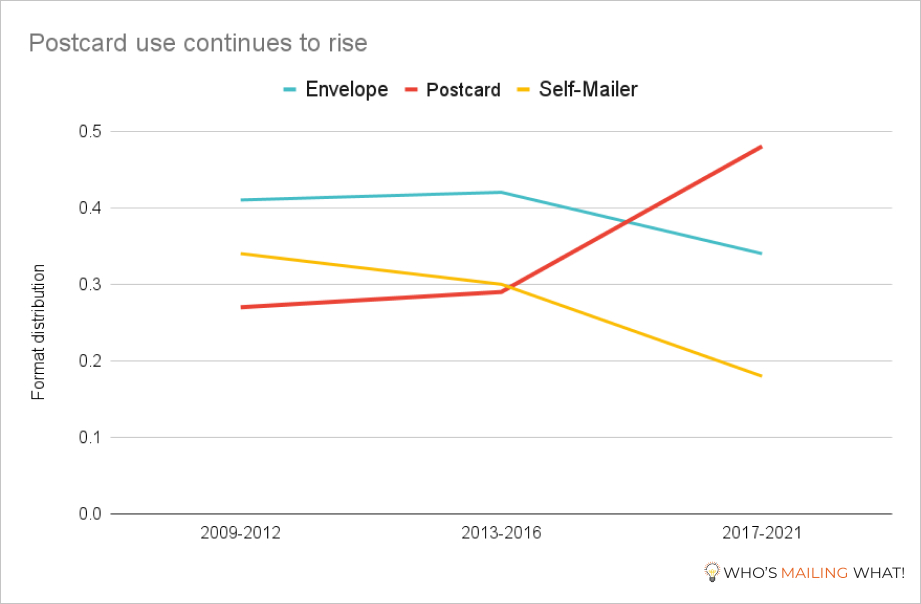
A breakdown of the format distribution covering only 2021 shows how dramatically marketers’ (and consumers’) preferences have changed. Of all the mail tracked by us through September 2021, envelopes and postcards are nearly equal.

Clear trends emerged in a review of format data covering B2B and B2C mail from 2010 to 2021. For decades, the letter was the dominant format in direct mail. The full-dress package — outer envelope, letter, reply form, lift note, insert/buck slip, and reply envelope — ruled the mailbox. Letters still account for much of B2B mail. However, consumer mail is where big gains in postcards are coming from.

So why the big rise in postcards?
•Higher postage and printing costs demanded a slimming-down or replacement of the traditional envelope format.
•Postcards are smaller, faster to read, and therefore it is easier to get prospects to accept an offer or go online for more information to make a decision.
•Many marketers tested away from envelopes and arrived at postcards that produced an acceptable ROI or response rate.
In the latest round of USPS price changes, postcards up to 6”x9” can now mail at the First-Class bulk rate. With the larger size, we expect to see some marketers move up to these bigger cards for the advantages they offer:
•Stand out more in the mailbox
•More room for headlines, images, copy, white space, or digital elements like QR codes
•Faster delivery, address correction, and return to sender
“Buoyed by the USPS change to qualify ‘postcards’ up to 6x9 at First-Class postcard rate[s], this direct mail format promises to be a favorite in 2022. The immediate mailbox impact, combined with the ability to effectively target in-home date with First-Class mail, positions this format as a strong response rate driver.” —Skip Dyer, Executive Vice President, Spire
3.Copy Is Becoming More Concise
Let’s talk about word count. Over the last 20 years, according to our stats, direct mail copy has decreased by 62%. That’s across every format — letters, folded self-mailers, and postcards. With the exception of a reversal in the middle of the last decade, it’s been a substantial drop.
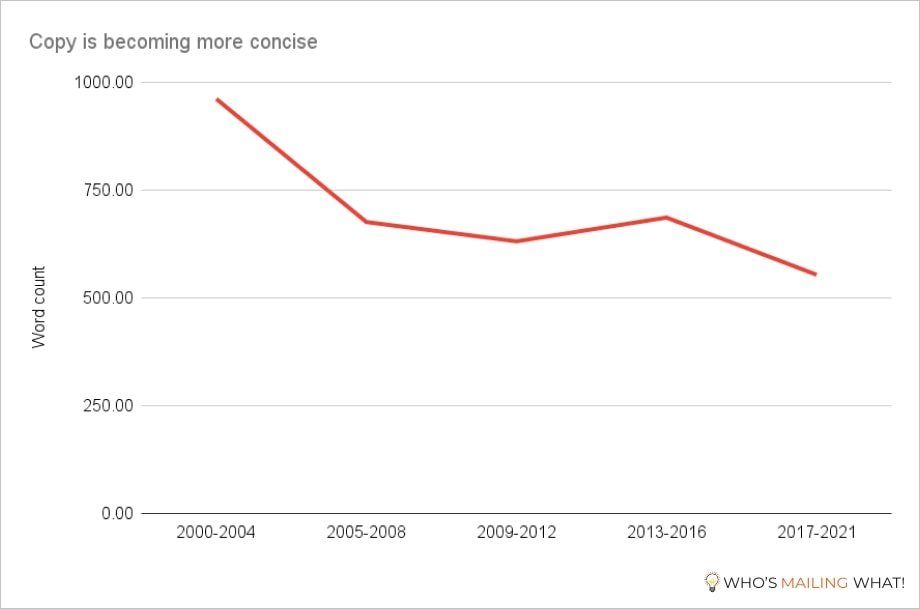
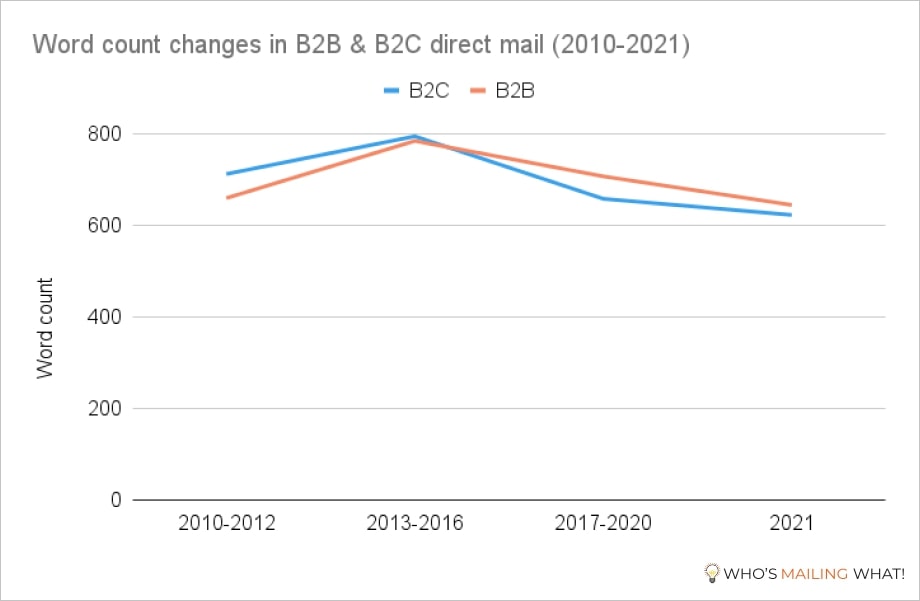
Maybe less is more for some good reasons. For example:
•Cynics say that reading is becoming a lost art, and blame all of our gadgets.
•Designers replace words with icons that are universally understood and allow faster scanning of a mail piece by the consumer.
•They also use white space to focus readers on headlines, offers, and calls-to-action.
•Marketers are using direct mail to drive recipients to the web to build interest and increase desire for your product or service.
What the Future Holds
Let’s face it: the future-telling business isn’t perfect. Unforeseen events have a way of upsetting even the best-supported trend data. We’ve all certainly learned that over the last two years.
But what’s clear is that marketers are keeping up with changes dictated by market conditions — and the continuing digitization of communications. These trends aren’t a threat to mail, but an opportunity for growth. Integrating channels and making mail leaner and more responsive will help direct mail thrive as a vital part of your marketing strategy.
Jill Corcoran has been building teams to serve marketers for the past 20 years. Employee and client happiness have always been her “North Star.” Jill runs the world's most complete resource of direct mail campaigns: Who’s Mailing What! (www.whosmailingwhat.com). Connect with her on LinkedIn (https://www.linkedin.com/in/jillcorcoran/), by email at jcorcoran@whosmailingwhat.com, or call 212.660.9880.
This article originally appeared in the November/December, 2021 issue of Mailing Systems Technology.











